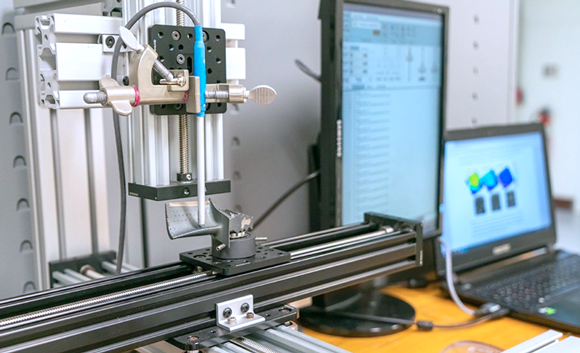Metal Additive Manufacturing used to combat counterfeit parts
January 4, 2023

Texas A&M University, College Station, Texas, USA, has announced that its researchers have developed a method of imprinting a hidden magnetic tag – encoded with authentication information – within manufactured hardware via Additive Manufacturing. The process is expected to allow the exposure of counterfeit goods more easily by replacing physical tags like QR or barcodes with these hidden tags.
As governments invest more in manufacturing, ensuring reliable authentication can become an issue of critical national concern. Without an easily available method to detect counterfeits, it can be nearly impossible to differentiate authentic parts or components from these counterfeits.
“The issue is that when I come up with an idea, device or part, it is very easy for others to copy and even fabricate it much more cheaply — though maybe at a lower quality,” stated Ibrahim Karaman, one of the paper’s authors, as well as Chevron Professor I and department head of the materials science and engineering department. “Sometimes they even put the same brand name, so how do you make sure that item isn’t yours? [The embedded magnetic tag] gives us an opportunity and a new tool to make sure that we can protect our defence and manufacturing industries.”
The team used metal Directed Energy Deposition (DED) Additive Manufacturing to embed these magnetic tags below the surface of non-magnetic steel hardware. Once embedded, the magnetic tag is readable via a magnetic sensor device (e.g., a smartphone) by scanning near the correct location on the product, allowing the information to be easily accessed by the user. While others methods exist, the researchers at Texas A&M have stated these feature barriers to real-world implementation, notably the expensive equipment required to undertake these methods.
Daniel Salas Mula, a researcher with the Texas A&M Engineering Experiment Station, added, “Different approaches have been used to try to locally change the properties of the metals during the manufacturing process to be able to codify information within the part. This is the first time that magnetic properties of the material are being used in this way to introduce information within a non-magnetic part, specifically for the 3D printing of metals.”
While the system is reportedly more secure than a physical tag or code located on the exterior of an item, the team is still working to improve the complexity of the method’s security. Karaman has stated the the next steps include developing a more secure method of reading the information, possibly via a physical dual authentication process.
‘Embedded Information in Additively Manufactured Metals via Composition Gradients for Anti-Counterfeiting and Supply Chain Traceability’ was recently published in Additive Manufacturing.
In Metal AM magazine:
Smart sensor-integrated parts by AM: A look at a novel possibility with industrial applications
In this article, Prof Dr-Ing Christian Seidel considers the next major step in PBF-LB, which could offer designers unknown potential: the production of sensor-integrated AM parts. Methods and solutions for the manufacturing of sensor-integrated AM parts are presented and industry-relevant case studies showcased, illustrating the potential offered by sensor-integrated ‘smart parts.’
















